Bill D. (VA)
Silver Member
- Joined
- Oct 7, 2008
- Messages
- 4,711
- Reaction score
- 6,212
- Golden Thread
- 6
- Location
- SE Virginia
- 🥇 Banner finds
- 6
- 🏆 Honorable Mentions:
- 2
- Detector(s) used
- F75 SE (land); CZ-21 (saltwater)
- Primary Interest:
- Other
Ever since I recovered this incredibly unique artifact about 10 days ago, I’ve expended a tremendous amount of time and effort contemplating the best methods for cleaning and preserving the hilt. As I posted earlier, my first inclination was to use electrolysis as I’m quite experienced using this technique and have had good success with it. Usually an iron artifact of this size will take at least several days to clean, sometimes much longer. But for some reason after just 18 hours in the tank the process had accelerated to the point that I was close to taking some of the base metal off. So I quickly had to shut that down, and look for a new approach that would be appropriate for this special find.
After spending hours on the web reading about various techniques and treatments, and corresponding with a number of knowledgeable folks, I finally decided to pursue the lye/zinc method which seems to be quite popular these days. However, my last discussion with a well-known relic hunter with 40+ years of experience cleaning a wide range of iron artifacts resulted in another change of direction. Since the hilt is made of wrought iron and has begun to split into its composite layers in some spots, I wouldn't be able to completely flush the lye out which could cause some issues down the road. And any further electrolysis was also out of the question so I was forced to follow a new strategy.
So after pulling it out from its temporary home in a bucket of rainwater, I carefully used a dental pic and dremel tool to remove as much of the remaining loose corrosion as possible without damaging the hilt. But due to its fragile nature I didn't make much progress with that. Then I immersed it in alcohol overnight to remove all the moisture, dried it with a soft cloth, followed by liberally spraying it with WD-40 to dissolve as much of the residual rust and orange haze as possible. Then after rubbing it in with a cloth and letting it air dry a bit, I started applying polyurethane and sprayed on 4 coats, and allowed a couple hours of drying between each. Might not be a perfect job, but this is about the best I can do under the circumstances of dealing with a very old and fragile artifact. I guess time will tell how good a job I did. Regardless, it will certainly take up a position of prominence in one of my display cases.
The series of pics below take it from immediately after recovery, to after an initial rinse, and finally after the 4 coats of polyurethane. And the last 2 pics are of a sword recovered at Jamestown a few years ago. Although not an exact match, mine is very similar and obviously from the same period. It’s interesting to note that in the Jamestown sword the blade tapers down before entering the hilt which explains why the rectangular slot in mine is smaller than might be expected.
Hopefully since this is an update of a recent recovery, the moderator allow this post to remain on this forum for a couple of days before moving it to the restoration forum.
After spending hours on the web reading about various techniques and treatments, and corresponding with a number of knowledgeable folks, I finally decided to pursue the lye/zinc method which seems to be quite popular these days. However, my last discussion with a well-known relic hunter with 40+ years of experience cleaning a wide range of iron artifacts resulted in another change of direction. Since the hilt is made of wrought iron and has begun to split into its composite layers in some spots, I wouldn't be able to completely flush the lye out which could cause some issues down the road. And any further electrolysis was also out of the question so I was forced to follow a new strategy.
So after pulling it out from its temporary home in a bucket of rainwater, I carefully used a dental pic and dremel tool to remove as much of the remaining loose corrosion as possible without damaging the hilt. But due to its fragile nature I didn't make much progress with that. Then I immersed it in alcohol overnight to remove all the moisture, dried it with a soft cloth, followed by liberally spraying it with WD-40 to dissolve as much of the residual rust and orange haze as possible. Then after rubbing it in with a cloth and letting it air dry a bit, I started applying polyurethane and sprayed on 4 coats, and allowed a couple hours of drying between each. Might not be a perfect job, but this is about the best I can do under the circumstances of dealing with a very old and fragile artifact. I guess time will tell how good a job I did. Regardless, it will certainly take up a position of prominence in one of my display cases.
The series of pics below take it from immediately after recovery, to after an initial rinse, and finally after the 4 coats of polyurethane. And the last 2 pics are of a sword recovered at Jamestown a few years ago. Although not an exact match, mine is very similar and obviously from the same period. It’s interesting to note that in the Jamestown sword the blade tapers down before entering the hilt which explains why the rectangular slot in mine is smaller than might be expected.
Hopefully since this is an update of a recent recovery, the moderator allow this post to remain on this forum for a couple of days before moving it to the restoration forum.
Amazon Forum Fav 👍
Attachments
-
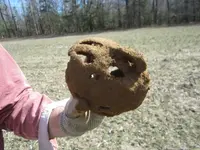 030815d.webp116.8 KB · Views: 165
030815d.webp116.8 KB · Views: 165 -
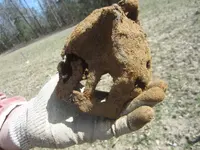 030815e.webp171.1 KB · Views: 164
030815e.webp171.1 KB · Views: 164 -
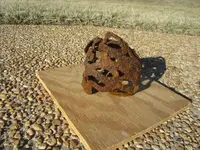 030815h.webp238.8 KB · Views: 155
030815h.webp238.8 KB · Views: 155 -
 030815i.webp191 KB · Views: 166
030815i.webp191 KB · Views: 166 -
 hilt18.webp35.3 KB · Views: 181
hilt18.webp35.3 KB · Views: 181 -
 hilt19.webp148 KB · Views: 178
hilt19.webp148 KB · Views: 178 -
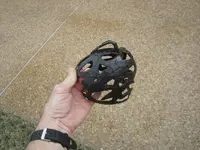 hilt20.webp144.9 KB · Views: 169
hilt20.webp144.9 KB · Views: 169 -
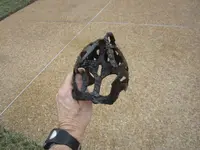 hilt21.webp132 KB · Views: 168
hilt21.webp132 KB · Views: 168 -
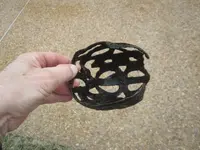 hilt22.webp96 KB · Views: 168
hilt22.webp96 KB · Views: 168 -
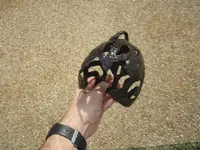 hilt23.webp163.5 KB · Views: 178
hilt23.webp163.5 KB · Views: 178 -
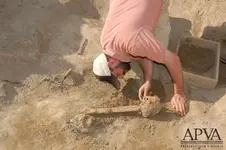 jamestown hilt2.webp76.2 KB · Views: 194
jamestown hilt2.webp76.2 KB · Views: 194 -
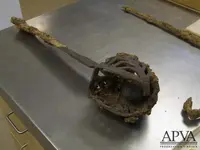 jamestown hilt3.webp34.5 KB · Views: 196
jamestown hilt3.webp34.5 KB · Views: 196
Upvote
18




